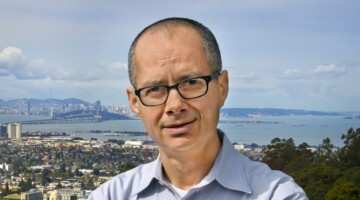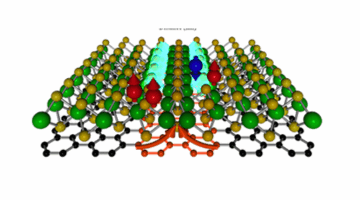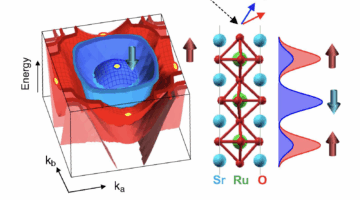-
- Exciting results from study that examined farmland soil treated only with organic fertilizers
- X-ray technique provides a new tool for nuclear forensics investigations
- Good Vibes at My Internship with Lawrence Berkeley National Laboratory
- Made in Berkeley Lab: design and fabrication do the heavy lifting
- X-ray technique provides a new tool for nuclear forensics investigations
- Exciting results from study that examined farmland soil treated only with organic fertilizers
ALS Publications by Omar Yaghi
Compilation of all publications with 2025 Chemistry Nobel Laureate Omar Yaghi as co-author that used the resources of the Advanced Light Source.
ALS in the News (September 2025)
Separating an Electron into Waves of Spin and Charge
Researchers are exploring how a thin film can host a Tomonaga–Luttinger liquid, which separates an electron’s charge and spin. The research findings could contribute to the development of ultra-compact and energy-efficient technologies. Read more »
Pinpointing Magnetic Mysteries and Mechanisms in a Layered Perovskite
The strontium ruthenate family has a perovskite-like structure that can assemble into different configurations, offering an ideal way to study how the physics change as the material goes from 3D to 2D. In this study, researchers revealed how electrons with different spins behave in distinct layers of a three-layer magnetic material. The results deepen the field’s understanding of how magnetism emerges in layered materials, an important concept for future magnetic technologies and quantum electronic devices. Read more »![]()
![]()
ALS in the News (July 2025)
-
- Expert Interview: Dimitri Argyriou
- Uncovering and Controlling Electron Charge Waves in Quantum Materials
- Confirmed by science—an unexpected finding in farm fields reveals the enormous potential of agricultural land to combat global warming
- Startup aims to shrink particle accelerators to transform semiconductor manufacturing
ALS in the News (June 2025)
-
- Science power-up: The most exciting thing in microelectronics
- The technologies fueling the future of fusion
- Shape-shifting hybrid materials offer bright future for solar and LED innovation
- Catalysts get a boost with atomic-level tinkering
- QSA harnesses quantum devices and techniques to explore physics
ALS in the News (May 2025)
-
- Advances bring us closer to new ‘light-squeezing’ technologies
- A toxic pit could be a gold mine for rare-earth elements
- From sequence to structure: A fast track for RNA modeling
- Making science: Inside Lawrence Berkeley National Lab
- Compute this: Six ways Berkeley Lab is shaping the future of microelectronics
- Two Berkeley Lab researchers elected to the National Academy of Sciences
- How Berkeley Lab is leading the biology-based industrial revolution
ALS in the News (March 2025)
ALS in the News (February 2025)
- 1
- 2
- 3
- …
- 23
- Next Page »


